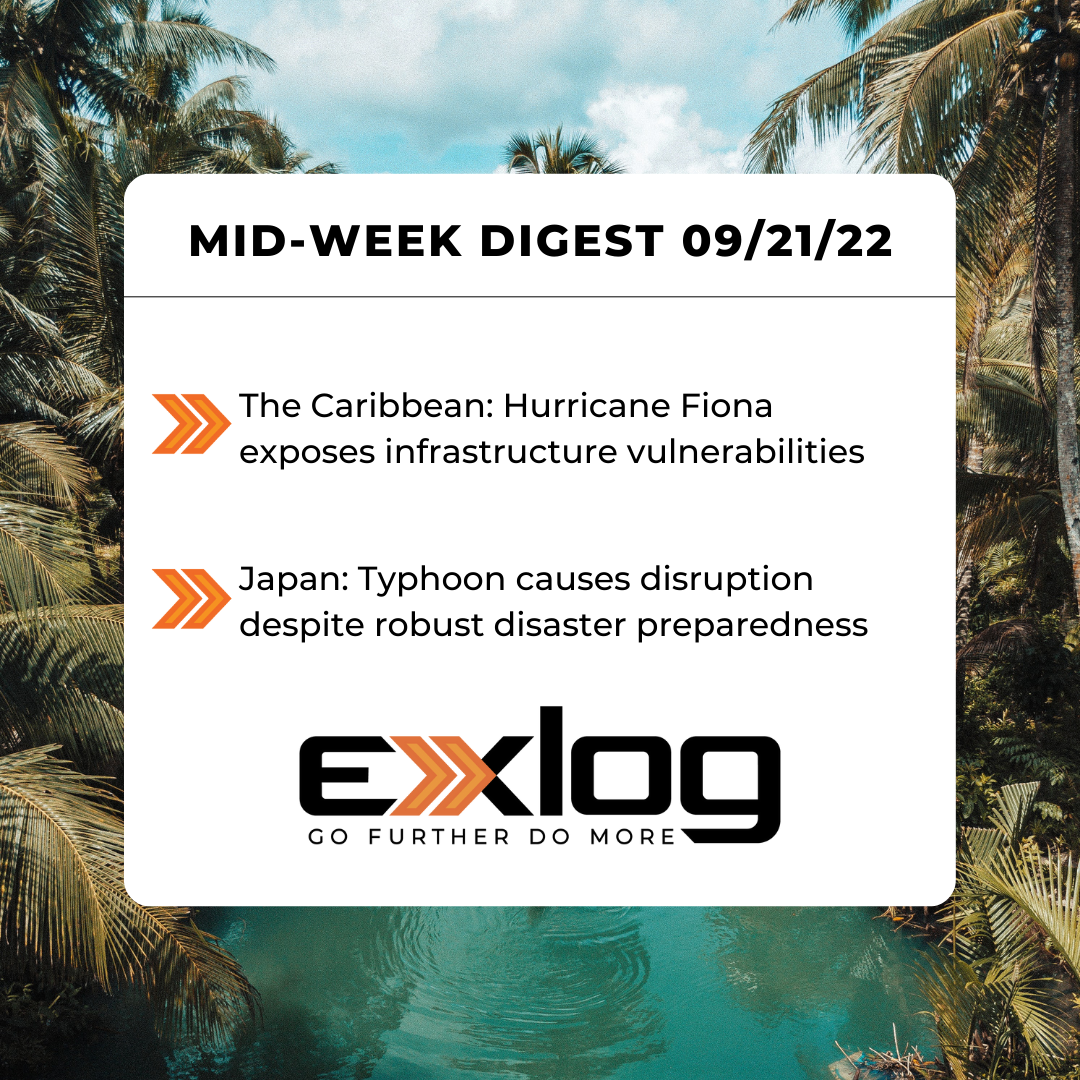Hurricane Fiona Strikes Several Caribbean Islands and Super Typhoon Nanmadol Batters Japan
The Caribbean: Hurricane Fiona Exposes Infrastructure Vulnerabilities
Hurricane Fiona has strengthened into a Category 4 storm on Sept. 21 and continues its path northward through the Atlantic after causing extensive property and infrastructure damage in Puerto Rico, the Dominican Republic, and the Turks and Caicos Islands in recent days. The storm initially made landfall in Puerto Rico on Sept. 18, bringing torrential downpours and winds reaching 90 mph (144 kph) that triggered widespread flooding and landslides. The hurricane decimated the country’s power grid – which was already in a vulnerable state due to damage caused by Hurricane Maria in 2017 – leaving nearly 1.2 million users without electricity and hundreds of thousands without safe drinking water; approximately 80% of the island remained without power as of Sept. 20. According to the Puerto Rican government, more than 750,000 people are without drinking water, and at least 1,200 residents are displaced in 70 shelters across the island. Seaports suspended operations due to flooding and mudslides, and two international airports in San Juan and Ponce canceled numerous flights, although airport operations have been gradually resuming since Sept. 19. In the Dominican Republic, the storm displaced more than 13,000 people; 1.1 million others lack access to drinking water, and 700,000 homes and businesses remain without power. The National Emergency Operation Center said that Fiona damaged or destroyed 3,000 homes and at least four bridges. The storm also significantly impacted travel, prompting the closure of four international airports and blocking traffic on several major highways. As Fiona reached Turks and Caicos on Sept. 20 with sustained winds of almost 125 mph (201 kph), the government imposed a curfew and urged residents to relocate from flood-prone areas. Several parts of Turks and Caicos – including Grand Turk, South Caicos, and Salt Cay – experienced island-wide power outages. While no casualties have been reported on the islands as of Sept. 20, five deaths have been recorded across Puerto Rico (2), the Dominican Republic (2), and the French territory of Guadeloupe (1). As of Sept. 21, the storm continues to move north and is forecast to approach Bermuda on Sept. 22, where it will likely cause substantial infrastructure damage and significantly disrupt travel and business operations.
Japan: Typhoon Causes Disruption Despite Robust Disaster Preparedness


